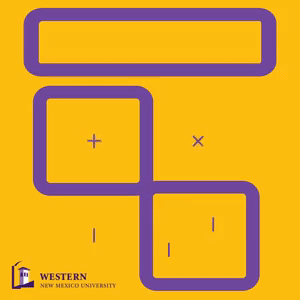A Gila Regional Medical Center presentation, as part of the hospital's Health Talk Series, featured a description of the capabilities of the facility's newly acquired 160-slice CT (computerised tomography) scanner.
Ashley Fajardo, GRMC radiation/imaging technician, said the 160-slice CT scanner is the best in New Mexico. "No other city in the state has this capability," she said. "The closest is in Lubbock, Texas."
The scanner is even more advanced than what is available at the closest Level 1 Trauma Center, which is in El Paso, Texas.
She explained that if someone is in an accident and his or her condition is too critical to be managed at GRMC, he or she is sent to El Paso or Albuquerque.
"We will be able to get better quality images with this scanner here than in El Paso or Albuquerque," Fajardo explained. "We will send them, and once the patient arrives, the physicians will already know exactly what to do."
She said the hospital also has an MRI (magnetic resonance imaging) machine that can give equal resolution images, but "at 2 a.m., no one is staffing the MRI, but we can do a CT scan 24/7."
The scanner is like a doughnut. "It's much better for those who are claustrophobic. "The patient passes through the hole, which has an X-ray tube in the scanner. The only difference between an X-ray machine and a scanner is that the scanner takes images from all angles for a 3-dimensional image."
Fajardo answered the question: "What is a slice? It refers to the amount of coverage along the length of the table, where the patient is lying. One hundred-sixty rows of detectors receive the X-rays. A four-slice coverage gives a quarter of a centimeter of coverage. A 160-slice scanner gives 8 centimeters of coverage."
"This exposes the patient to less radiation and creates faster scans," Fajardo said.
With a four-slice scanner, patients were required to hold their breath for 20 to 30 seconds or a blurry image would result. With the 160-slice, a patient will be required to hold his or her breath for five to 15 seconds, with the result of a better image.
"We always use an amount of radiation that is as low as reasonably achievable for a good image," Fajardo said. "Radiologists are very good about using the least amount of radiation, and we know how much radiation you've had in the past."
The amount of radiation needed is also determined by how large the person is.
"We have dose limitation for each scan set by the American College of Radiologists guidelines and by our physicist. The machine detects how much is used," Fajardo said. "The dose is tracked for each exam and kept in patient records."
Toshiba is the manufacturer of the scanner, and the company has developed software, Quantum Denoising Software, that allows less radiation to be used and still get clearer images.
Another advantage of the new scanner is that the table can hold up to 660 pounds, whereas the four-slice machine was limited to 450 pounds.
"The wider table bed is also more comfortable," Fajardo said. "Your arms don't fall off the sides.
"The new scanner provides better precision during biopsies and less intravenous iodine contrast is used," Fajardo said. "Concerns with the iodine contrast are if a person is allergic to it, and it can affect kidneys in those with kidney problems. It is mandatory to have blood work done before a CT scan. Not every scan requires iodine contrast, and MRIs and nuclear medicine do not require iodine.
"The new scanner is a state-of-the art scanner for angio studies, as well as for the head, neck, chest, abdomen and extremities," she continued. "And the best part is that it does not cost the patient any more than before."
The images can show metal replacement parts, such as screws in hips.
"The image can be manipulated to take away the bones, and show only vessels," Fajardo explained.
GRMC is open 24/7 for emergencies, with emergency-room physicians always available. If a radiologist is not on site, one can always be reached by phone, and the images can be sent via computer.
"All radiologists at Gila Regional Medical Center are board-certified," Fajardo said. "The CT scanner is only steps away from the emergency room."
The new scanner gives GRMC the capability of doing brain perfusions for strokes, as well as calcium scoring for risk of heart attack.
"We will be able to do a lot more cardiology work," Fajardo said.
She pointed out that any kind of screening test does not require doctor's orders, and insurance companies cover CT scans most of the time.
"I suspect we will get business from larger towns, who don't have the technology," Fajardo said. "We are a Level 3 Trauma Center."
Another advantage of the new 160-slice scanner is that it will be upgradable in the future to a 320-slice scanner.
Bernie Rubenzer, GRMC director of medical imaging, said the "body of knowledge has not caught up with the technology. GRMC has nine-board-certified radiologists. They rotate through the facility and have specialties in neuro, cardio and pediatric, among others. Most have the extra training of fellowships."
To a question about whether the hospital has plans to expand cardiology, Rubenzer said the substructure is being set up to attract a cardiologist or cardiology group to Silver City and GRMC.
Fajardo said the new scanner would be up and running on Halloween.
Rubenzer said the process of setting up the machine has "so far, so good, gone smoothly. We will get national coverage and there will be people flying in from all over the world to see how the scanner works."
An open house to show the 160-slice scanner to the public will be held at GRMC from 4-6 p.m. Wednesday, Nov. 9.








